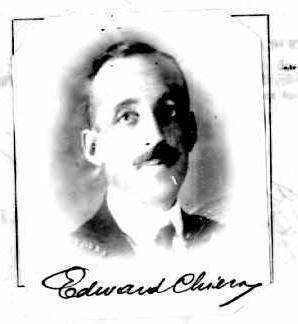Edward Chiera
 Edward Chiera (August 5, 1885 – June 20, 1933) was an Italian-American archaeologist, Assyriologist, and scholar of religions and linguistics.
Edward Chiera (August 5, 1885 – June 20, 1933) was an Italian-American archaeologist, Assyriologist, and scholar of religions and linguistics.Born in Rome, Italy, in 1885, Chiera trained as a theologian at the Crozer Theological Seminary (B.D. 1911, Th.M. 1912). He completed his doctorate at the University of Pennsylvania (Ph.D. 1913). He was faculty of the University of Pennsylvania until 1927, at which time he joined the Oriental Institute of the University of Chicago.
Chiera was Annual Professor of the American Schools of Oriental Research (ASOR) at Baghdad in 1924 – 1925. At that time he conducted archaeological excavations in ancient Nuzi, near Kirkuk, Iraq, at the invitation of Gertrude Bell and sponsored by the Iraq Museum. His discovery and deciphering of the Nuzi Tablets was an important archaeological result. He traveled to Istanbul in 1924 and copied some fifty pieces of inscribed clay tablets from the Nippur collection. In the years that followed, he copied and translated more than two hundred literary tablets, among which ''Istanbul #2461'' containing the oldest known love song and others with some of the Gilgamesh poems. This work gave scholars important new insights into Sumerian history and literature.
A pre-eminent scholar of ancient cuneiform languages, Chiera became Editor of the Chicago Assyrian Dictionary Project, a monumental work which had been started in 1921, and eventually took 85 years to complete. He was a close associate of the director and founder of the Oriental Institute, James Henry Breasted. Chiera also acted as a curator of the Museum of the Oriental Institute, and made significant acquisitions for its collections, in addition to his own discoveries.
Chiera led Oriental Institute excavations at Khorsabad, near Mosul, Iraq in 1928 - 1929, again with great success. The site of the ancient palace of King Sargon II was excavated. Valuable works of Assyrian art were recovered, including a colossal Lamassu which had guarded the entrance to the palace. He continued as field director of ASOR in 1931, in a joint expedition of ASOR and Harvard University. He was instrumental in the development of plans for the ASOR, for the Iraq Museum, and in the careers of other noted archaeologists. Provided by Wikipedia
Sumerian epics and myths /
: Reproductions of tables from Nippur belonging to the Babylonian Section of the University Museum of the University of Pennsylvania. S.N. Kramer has grouped the portraits in their present arrangement and has contributed the introductory descriptions of the text. Cf. Foreword. : xi, 7, [1] pages, 26, 26a, 27-111 number l. ; 31 cm. : Bibliography : page xi.
Sumerian texts of varied contents /
:
"This volume ... consists of facsimiles of tablets from the Nippur collection of the University of Pennsylvania. Dr. Samuel N. Kramer ... has ... grouped the portraits in their present arrangement and contributed the introductory descriptions of the texts."--Editorial note.
The texts include Sumerian proverbs, incantations, lamentations, hymns, and liturgies together with a few apparently legendary and historical texts. :
4 pages 1., vii-ix, 7, [1] pages, 109 number 1 ; 31 cm. :
Bibliography : page ix.
Inscriptions from Adab /
:
"After the first few portraits, this volume is made up of accounts ... illustrating the conduct of business in the city and temple of Adab during the third millennium B.C."--Foreword.
At head of titel page : The University of Chicago Oriental institute publications, vol. XIV.
Edited by Edward Chiera. cf. Foreword.
The numbered leaves are printed on one side only.
The texts are from the "Oriental institute collections." cf. pages 7. :
ix, 8 pages, 87 number l. ; 31 cm.
